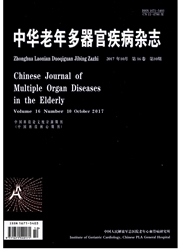

 中文摘要:
中文摘要:
目的观察糖尿病大鼠与正常大鼠全层皮肤缺损刨面愈合过程中神经末梢的再支配情况与创面愈合的关系。方法非糖尿病大鼠(n=12)与糖尿病大鼠(n=12)制成相同的全层皮肤缺损创面愈合模型。于伤后3d、7d和14d采取创面皮肤标本,用组织病理HE和SP抗体免疫组织化学染色技术检测创面肉芽再生与再上皮化情况,并对肉芽创面内周围神经末梢再生情况进行观察。结果糖尿病大鼠全层皮肤缺损创面愈合的时间延长,其周围神经末梢的数量较正常组明显减少,再生速度缓慢,肉芽组织中微血管和胶原形成的能力明显降低。结论糖尿病大鼠创面的愈合障碍与神经组织再生延迟相关。
 英文摘要:
英文摘要:
Objective To compare the reinnervation during healing of excisional full-thickness skin wound between diabetic and non-diabetic rats. Methods Full-thickness skin wounds were created in diabetic rats (n= 12) and normal Wistar rats (n= 12). Skin samples were obtained from rat back wound sites on 3, 7 and 14 after wounding. The HE staining method and immunohistochemical technique using antibodies against substance P (SP) were used to examine granulation and reepithelialization of the wounds. An analysis was performed to determine nerve fiber number and nerve lengths (NLs) of the epidermis and the dermis and the nerves surrounding sweat glands in skin. Results Wounds of normal Wistar rats showed significantly faster in healing than those of diabetic group, the quality of epithelialization was better in normal rats than in diabetic tats. SP immunoreaction positive fibers in the epi- dermis and dermis of skin from diabetic rats were less than those in normal rats. The rate of regeneration of peripheral nerve was slower in diabetic rats than that in normal rats. The formation of the capillary and the collagen in granulation tissue was decreased in diabetic rats. Conclusion The disorder of peripheral nerve regeneration is related to impaired wound healing in diabetic rats.
 同期刊论文项目
同期刊论文项目
 同项目期刊论文
同项目期刊论文
 期刊信息
期刊信息
